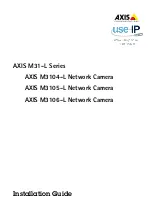
154
Configuring Switch-Based Authentication
Information About Configuring Switch-Based Authentication
To initiate session authentication, the AAA server sends a standard CoA-Request message which contains a Cisco
vendor-specific attribute (VSA) in this form:
Cisco:Avpair=“subscriber:command=reauthenticate”
and one or more
session identification attributes.
The current session state determines the switch response to the message. If the session is currently authenticated by
IEEE 802.1x, the switch responds by sending an Extensible Authentication Protocol over LAN (EAPoL) RequestId
message to the server.
If the session is currently authenticated by MAC authentication bypass (MAB), the switch sends an access-request to
the server, passing the same identity attributes used for the initial successful authentication.
If session authentication is in progress when the switch receives the command, the switch terminates the process, and
restarts the authentication sequence, starting with the method configured to be attempted first.
If the session is not yet authorized, or is authorized via guest VLAN, or critical VLAN, or similar policies, the
reauthentication message restarts the access control methods, beginning with the method configured to be attempted
first. The current authorization of the session is maintained until the reauthentication leads to a different authorization
result.
CoA Session Termination
There are three types of CoA requests that can trigger session termination. A CoA Disconnect-Request terminates the
session, without disabling the host port. This command causes reinitialization of the authenticator state machine for the
specified host, but does not restrict that host’s access to the network.
To restrict a host’s access to the network, use a CoA Request with the
Cisco:Avpair="subscriber:command=disable-host-port" VSA. This command is useful when a host is known to be
causing problems on the network, and you need to immediately block network access for the host. When you want to
restore network access on the port, reenable it using a non-RADIUS mechanism.
When a device with no supplicant, such as a printer, needs to acquire a new IP address (for example, after a VLAN
change), terminate the session on the host port with port-bounce (temporarily disable and then reenable the port).
CoA Disconnect-Request
This command is a standard Disconnect-Request. Because this command is session-oriented, it must be accompanied
by one or more of the session identification attributes described in the
CoA Session Identification, page 152
. If the
session cannot be located, the switch returns a Disconnect-NAK message with the “Session Context Not Found”
error-code attribute. If the session
is
located, the switch terminates the session. After the session has been completely
removed, the switch returns a Disconnect-ACK.
If the switch fails-over to a standby switch before returning a Disconnect-ACK to the client, the process is repeated on
the new active switch when the request is resent from the client. If the session is not found following resend, a
Disconnect-ACK is sent with the “Session Context Not Found” error-code attribute.
CoA Request: Disable Host Port
This command is carried in a standard CoA-Request message that has this new VSA:
Cisco:Avpair="subscriber:command=disable-host-port"
Because this command is session-oriented, it must be accompanied by one or more of the session identification
attributes described in the
CoA Session Identification, page 152
. If the session cannot be located, the switch returns a
CoA-NAK message with the “Session Context Not Found” error-code attribute. If the session is located, the switch
disables the hosting port and returns a CoA-ACK message.
If the switch fails before returning a CoA-ACK to the client, the process is repeated on the new active switch when the
request is resent from the client. If the switch fails after returning a CoA-ACK message to the client but before the
operation has completed, the operation is restarted on the new active switch.
Summary of Contents for IE 4000
Page 12: ...8 Configuration Overview Default Settings After Initial Switch Configuration ...
Page 52: ...48 Configuring Interfaces Monitoring and Maintaining the Interfaces ...
Page 108: ...104 Configuring Switch Clusters Additional References ...
Page 128: ...124 Performing Switch Administration Additional References ...
Page 130: ...126 Configuring PTP ...
Page 140: ...136 Configuring CIP Additional References ...
Page 146: ...142 Configuring SDM Templates Configuration Examples for Configuring SDM Templates ...
Page 192: ...188 Configuring Switch Based Authentication Additional References ...
Page 244: ...240 Configuring IEEE 802 1x Port Based Authentication Additional References ...
Page 298: ...294 Configuring VLANs Additional References ...
Page 336: ...332 Configuring STP Additional References ...
Page 408: ...404 Configuring DHCP Additional References ...
Page 450: ...446 Configuring IGMP Snooping and MVR Additional References ...
Page 490: ...486 Configuring SPAN and RSPAN Additional References ...
Page 502: ...498 Configuring Layer 2 NAT ...
Page 770: ...766 Configuring IPv6 MLD Snooping Related Documents ...
Page 930: ...926 Configuring IP Unicast Routing Related Documents ...
Page 976: ...972 Configuring Cisco IOS IP SLAs Operations Additional References ...
Page 978: ...974 Dying Gasp ...
Page 990: ...986 Configuring Enhanced Object Tracking Monitoring Enhanced Object Tracking ...
Page 994: ...990 Configuring MODBUS TCP Displaying MODBUS TCP Information ...
Page 996: ...992 Ethernet CFM ...
Page 1066: ...1062 Using an SD Card SD Card Alarms ...
















































